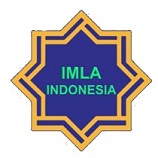AN ALTERNATIVE VIEW OF THE ISRAEL-PALESTINE DISPUTE: THE ESCHATOLOGICAL DIMENSION
Abstract
This article examines the Israel-Palestine conflict through the lens of eschatology, a religious belief concerning end-of-age expectations, which often incites violent reactions. Despite extensive research on the Israel-Palestine conflict, there is a lack of comprehensive studies exploring the role of eschatology in this context. The Middle East, including Israel and Palestine, is a turbulent war zone with religion significantly fueling extreme hatred and violence. The focus is on the impact of religious traditions, particularly eschatology, which is prone to provoke violent reactions. The study analyzes this through five sections: eschatology prophecy, daily religion, Jerusalem’s role, expansion beyond Jerusalem, and the conveyed message. The article concludes that eschatology significantly influences this conflict, with violent apocalyptic prophecies exacerbating the situation. Resolving this conflict necessitates diverse interpretations of eschatology and apocalyptic prophecies and understanding religion’s role in the conflict.
Keywords
Full Text:
PDFReferences
Alma'itah, A.Q., & ul Haq, Z. (2022). The concept of Messiah in Abrahamic religions: A focused study of the eschatology of Sunni Islam. Heliyon, 8(3), 1-6.
Amirav, M. (2017). The disintegration of the Jerusalem unification policy. Palestine-Israel Journal of Politics Economics and Culture, 14(1), 1-3.
Arnold, M. (2021). Fundamentalism and radicalization among Muslim minority youth in Europe as a global social challenge. In R. Baikady, S.M. Sajid, J. Przeperski, V. Nadesan, M. R. Islam & J. Gao (Eds.), The Palgrave handbook of global social problems. Palgrave Macmillan.
Asghari, S. A. H. (2021). Presence, manifestation, and visitation in Abrahamic religions: The notion of presence Shi’ism. Journal of Religious & Theological Information, 21(1-2), 54-67.
Barnes, C. (2014). The authorship of Isaiah: A survey of approaches and a proposal for a consistent evangelical approach. [M.A. Thesis, New Orleans Baptist Theological Seminary].
Blazak, R. (2022). Understanding extremism: Frames of analysis of the far right. In B. Perry, J. Gruenewald, & J. Scrivens (Eds.), Right-wing extremism in Canada and the United States. Palgrave Macmillan.
Cohen, Y. (1999). The political role of the Israeli Chief Rabbinate in the temple mount question. Jewish Political Studies Review, 11(1/2), 101–126.
Cohen-Hattab, K. (2022). Cemeteries as representing national identity: trends in Jewish burial in Jerusalem during British rule (1917–1948). Journal of Modern Jewish Studies, 21(4), 1-17.
Gorenberg, G. (2000). The end of days: Fundamentalism and the struggle for the temple mount. Oxford University Press.
Gumerlock, F., Delcogliano, M., & Schmidt, T.C. (2022). Writings on the apocalypse. The Catholic University of America Press.
Gustafsson, A. I. (2022). Apocalypse fatigue. [Doctoral dissertation, University of Arts, Crafts and Design].
Hadžić, F. (2022). Space and place of Jerusalem; sociology of religion and inter-cultural sociopolitical peace and conflict. Journal of Islamic Jerusalem Studies, 22(1), 47-72.
Harris, E. J. (2022). Utilizing the theology of religions and human geography to understand the spatial dimension of religion and conflict. Religions, 13(6), 1-14.
Höfner, M. (2010). Cosmogony and eschatology. In W. Schweiker (Ed.), Encyclopedia of religious ethics. Wiley.
Kärkkäinen, V. (2022). Hope gone awry—An odd bed fellowship of Islamic and Christian neo-apocalypticism. Dialog, 61(1), 32-38.
Kavrakis, K. (2022). Identity and ideology through the frames of al-Qaeda and Islamic State. Terrorism and Political Violence, 34(9), 1-17.
Kippenberg, H. (2011). Violence as worship: Religious wars in the age of globalization. Stanford University Press.
Khosravi, M. (2021). The importance of human security from the perspective of three great divine religions: Zoroastrianism, Christianity, and Islam. International Journal of Religion & Spirituality in Society, 12(1), 65–78.
Lehrs, L. (2016). Jerusalem on the negotiating table: Analysing the Israeli-Palestinian peace talks on Jerusalem (1993–2015). Israel Studies, 21(3), 179–205.
Levin-Banchik, L. (2022). War and conflict in the Middle East and North Africa. The Journal of the Middle East and Africa, 3(3), 359-361.
Newberg, E., & Lewis, D. M. (2022). A short history of Christian Zionism. Studies in Christian-Jewish Relations, 17(1), 1-3.
McClintock, S. (2022). Millennial fiction. In P. O’Donnell, S. J. Burn & L. Larkin (Eds.), The encyclopedia of contemporary American fiction 1980–2020. Wiley.
Meyer, B. (2010). Aesthetics of persuasion: Global Christianity and Pentecostalism’s sensational forms. South Atlantic Quarterly, 109(4), 741–763.
Orsi, R. A. (2022). The study of religion on the other side of the good religion/bad religion binary. Journal of Religious Ethics, 50(2), 312-317.
Rood, J. M. (2004). Chapter two Jerusalem, the Sharīʿa, and the fundaments of Ottoman provincial government. In J. M. Rood (Ed.), Sacred law in the holy city. Brill.
Poorthuis, M. (2022). Abrahamic religions and the environment: Intimate strangers? In L. Hufnagel (Ed.), Sustainability, ecology, and religions of the world. IntechOpen.
Pringle, D. (2022). Jerusalem 1099, from Muslim to Christian City Jerusalém, 1099: da cidade muçulmana à cidade cristã. Medievalista, 32, 1-21.
Ramon, A. (2001). Beyond the Western Wall: The various attitudes of the state of Israel and the Jewish public towards the Temple Mount (1967-1999). In Y. Reiter (Ed.), The sovereignty of G-d and people: Sanctity and political centrality on the temple mount. The Jerusalem Institute for Israel Studies.
Sergeev, M. Y. (2022). Religion in the globalized world. In A. N. Chumakov, A. DeBlasio & I. V. Ilyin (Eds.), Philosophical aspects of globalization: A multidisciplinary inquiry. Brill.
Shdema, I., Zelkovitz, I., & Sharabi, M. (2022). The effects of Islamization on Muslim-Christian relations within Israel’s Arab community before and after the ‘Arab Spring. Israel Affairs, 28(2), 208-231.
Shragai, N. (1995). The Temple Mount conflict. Tsomet Press.
Shragai, N. (2008, January 3). No moving Jewish lips in prayer on Temple Mount, says Dichter. Haaretz. http://www.haaretz.com/hasen/spages/940710.html.
Stowasser, B. F. (2022). The end is near: Minor and major signs of the hour in Islamic texts and contexts. Georgetown University.
Tarr, N. (2022). Ethno-religious conflict and the duration of peace: Autonomy, discrimination, and territory. (Doctoral dissertation, Arizona State University).DOI: https://doi.org/10.20961/cmes.16.1.73969
Refbacks
- There are currently no refbacks.
Copyright (c) 2023 Center of Middle Eastern Studies (CMES)

This work is licensed under a Creative Commons Attribution-ShareAlike 4.0 International License.
| Copyright of CMES ISSN 2085-563X (print) and ISSN 2502-1044 (online) CMES Journal is licensed under a Creative Commons Attribution-ShareAlike 4.0 International License. | CMES (Center of Middle Eastern Studies) Print ISSN: 2085-563X Online ISSN: 2502-1044 Website: https://jurnal.uns.ac.id/cmes/index Email: cmes@mail.uns.ac.id Published by: Universitas Sebelas Maret Office: Department of Arabic Literature, Faculty of Cultural Science, Universitas Sebelas Maret Ir. Sutami Street, No. 36A, Surakarta, Jawa Tengah 57126 Phone: +62 822-4000-2313 |















